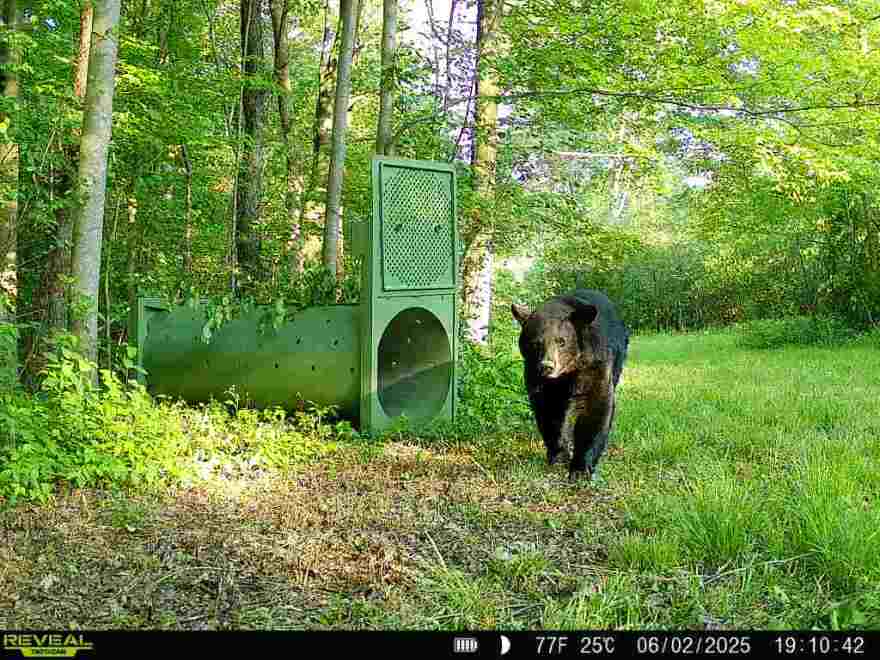A roving black bear made headlines earlier this month for wandering neighborhoods near Dayton and Cincinnati.
Sightings in that region are rare, said Katie Dennison, a biologist with the Ohio Division of Wildlife, as the species generally prefers areas with more plentiful natural resources and potential mates. But black bears are expanding their range in the state.
“The best evidence we have [of resident bears] is when we see sows, female bears with cubs,” she said. “And we have had a few of those recorded in recent years, particularly in northeast Ohio, around Ashtabula and Trumbull counties.”
The return of black bears
Black bears were completely wiped out of Ohio in the mid-1800s.
“They originally left because of loss of forested habitat as well as unregulated hunting,” Dennison said.
But now, the state has restored forests, especially in eastern parts of the state. And at the same time, the black bear population in neighboring states, like Pennsylvania, has grown.
“So there's plenty of bears to move back into Ohio,” she said.
Still, that process can take a long time because unlike male bears, who sometimes stray far from home, female bears generally don’t travel far.
“Sometimes they'll just establish home ranges that overlap that of their mother,” Dennison said. “So that can be a very slow process for them to move into a new area. But once they're in that area and reproducing and adding new bears to the population, it goes faster.”
Black bear research
Dennison is working with researchers at the Ohio Division of Wildlife and the University of Dayton to capture and fit up to 20 bears in the state with GPS collars.
The collars transmit location data, which scientists can use to learn more about the bears’ preferred habitat and how much space they need.
They’ll also follow female bears to learn how many cubs they have and whether those cubs survive.
“All of that information can be put into models to help us come up with some projections for where bears might continue to expand and how fast we might expect them to expand in the state,” Dennison said.

Bear safety
As bears continue to recolonize Ohio, sightings of them could become more frequent — even in places like the Cincinnati suburbs.
“That was an unusual situation,” Dennison said, “but not unusual for the time of year.”
In June and July, young bears leave their mother’s home range and go off on their own. Males in particular can travel long distances, Dennison said, sometimes over a hundred miles.
“We think that's what happened with the bear that was seen in Dayton and Cincinnati,” she said.
That bear was last spotted heading southeast of Cincinnati, to an area more hospitable to the species. But if you spot him — or another black bear in the state — Dennison said the best thing to do is give it space.
“Their natural response when they see a person is going to be fear and they're going to want to run away,” she said. “So the best thing that you can do is try and encourage that. You don't want to run yourself. Instead make yourself look as big as possible, put your arms up in the air, you can wave them around, you can make a lot of noise. And that'll reinforce that fear of humans in the bear and hopefully get them to move along to another place.”



